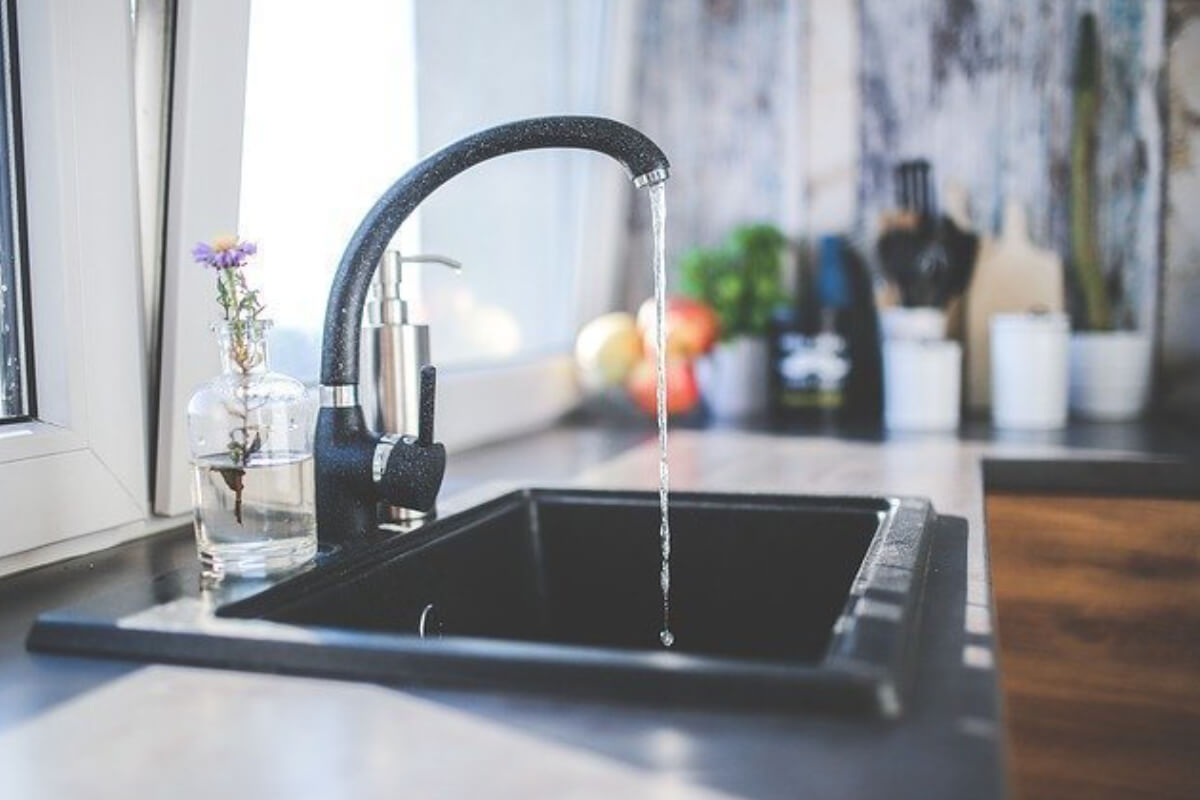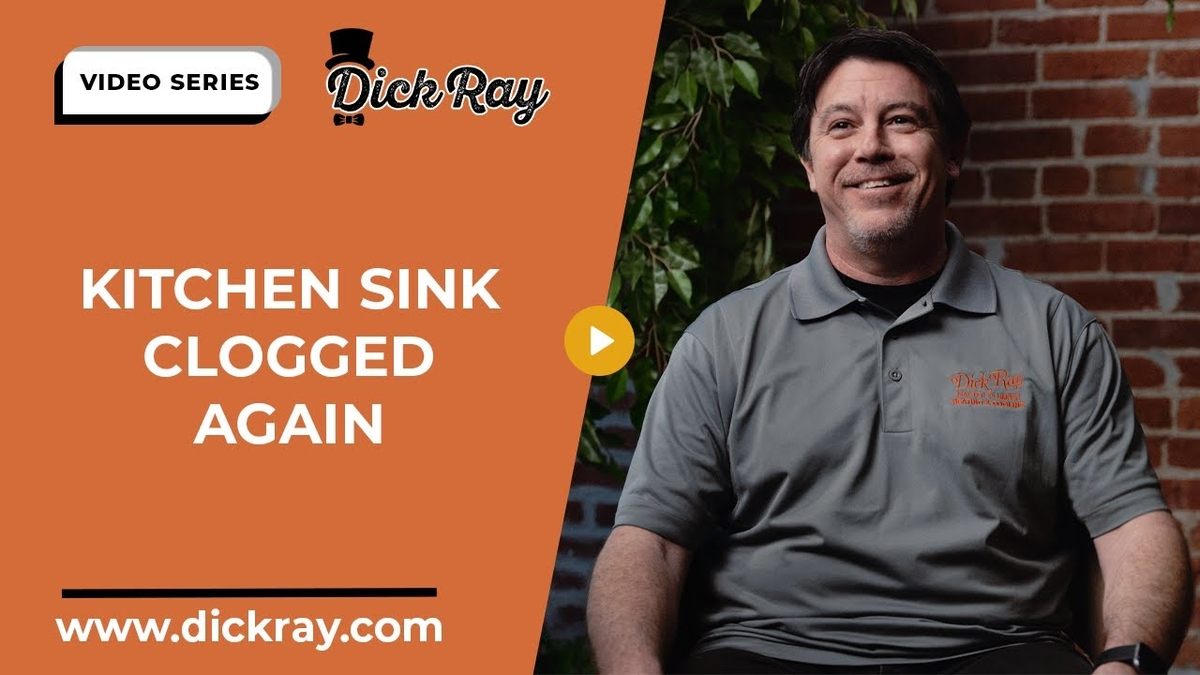In the United States, 90 percent of people receive their drinking water from one of more than 151,000 public water systems. But do you know where that water comes from?
Whether you rely on your city to provide water or your home is serviced by a private well, it’s important to know where that water is sourced. It’s equally important to understand the process of your area’s water treatment process. Whatever is in your drinking water will end up in your body. If water is treated with unsafe contaminants, or pollution sneaks into the supply, it can cause health issues with long-term consequences.
Just like you read labels on your food to find out what ingredients are in it, it’s also important to understand what you’re getting when you drink the water from your tap. If you receive your water from a public water system, then your local water utility company is responsible for providing and reporting on the water being sent into your home for drinking, bathing, cooking and more. However, about 10 percent of Americans get their water from a private well underground somewhere on their property. Their well supplies water to their home.
Know What Is in Your Water
It’s easy to take it for granted that the drinking water in our homes is safe and clean. And we wish that was always the case. Unfortunately, today’s water quality standards don’t address every possible contaminant that can get into your water. Additionally, water — whether public or well — can be impacted by water pollution, leaving supplies vulnerable to the effects water pollution can cause. Because of this, it’s important to know what’s actually in your water.
When you’re discussing water quality, the words “contaminant” and “pollutant” get thrown around a lot.
So what’s the difference?
A contaminant is any chemical or substance in the water supply. Some contaminants are naturally occurring, such as dirt, rocks and even bacteria from human or animal fecal matter. Other contaminants include the chemicals used during the water purification process, such as arsenic and chlorine.
On the other hand, a pollutant is a substance that has been introduced to the water supply and is dangerous to the health of those consuming it, either because of what it is or the quantity at which it exists in the water supply. It can create health and environmental problems if it is left undetected or untreated, which is why it’s critical to understand water pollution causes and effects.
Sometimes, the line between a contaminant and a pollutant can be very fine. A contaminant can turn into a pollutant if it is added at the wrong amounts or if it is found to be harmful.
Take arsenic, for example. Arsenic is a common substance found in water. Sometimes, it enters water through natural deposits, other times it is introduced to the water supply as the result of runoff from certain individuals can’t industries, particularly ones engaged in burning coal, copper smelting or mining. When arsenic occurs naturally, it happens in small amounts and is safe. However, when it occurs as the result of runoff and pollution, it becomes present in higher amounts and has the potential to be dangerous to consumers.
Another problem with contaminants is that the rules set in place to protect drinking water don’t go as far as they should. For example, the federal government restricts the amount of arsenic in water to 100 parts per billion (ppb), but the California Office of Environmental Health Hazard Assessment determined a safe level of arsenic is only around 0.004 ppb.
Federal regulations leave a lot of wiggle room when it comes to contaminants, because, in some cases, they only address a family of contaminants, rather than each subset within the family of contaminants. For example, federal regulations only address general chromium levels. There are different variations of Chromium, however, including Chromium-3 — which is safe to drink — and Chromium-6 — which is linked to the occurrence of stomach cancer and tumors. This is currently under review, but no changes to federal Chromium regulations have been made.
Not all chemicals in your drinking water are as risky as Chromium-6, but even those believed to be relatively safe can cause problems over time or in someone who is sensitive to a particular chemical. For example, in the past, chlorine was commonly used to purify water, but when it mixes with organic matter, it creates by-products that can cause cancer or become toxic at high levels.
What Regulations Are Enforced for Health and Safety?
The federal government has charged the Environmental Protection Agency (EPA) with establishing and enforcing a set of clean water standards under the Safe Water Drinking Act (SWDA). Currently, the EPA regulates more than 90 contaminants commonly found in drinking water. They periodically review these, as well as requests to include “new” contaminants that have come to light to make changes and updates to their regulations.
EPA regulations address the presence of contaminants in the water supply, as well as the operation and condition of water treatment facilities and the qualifications of the people who operate them. Their regulations also contain guidelines for testing water supplies.
States can add to the federal regulations if they want to, but they can’t take anything away from them.
Every year, community water systems all over the country are required to distribute a Consumer Confidence Report to their users. The purpose of this report is to update users on what’s currently in their drinking water and where it’s coming from. This is intended to be a general overview of what’s going on with the water supply, by breaking down which of the regulated contaminants are being used in the water and how much of those contaminants are in it.
One of the reasons why this annual report is so important is that certain individuals can’t tolerate particular contaminants in their water — even if they fall within the legal limits. Individuals who have a severely compromised immune system, or children, may not be able to tolerate drinking water from a public water system and require an alternative to water straight from their tap. By identifying chemicals that may cause potential problems for these individuals, families can avoid health issues and protect themselves before problems arise.
If you’re one of over 15 million U.S. households that receive their water from a well, then you aren’t subject to the same standards and oversight by the EPA. It’s up to you to test your water annually for nitrates, total coliform bacteria, pH levels and total dissolved solids. You can also test for any other contaminants you suspect might be causing problems. Well water should always be tested by a state-certified laboratory that specializes in testing drinking water.
How Is Water Treated?
Public Drinking Water Systems rely on a specific step-by-step process to treat water before it is distributed into homes. This process was designed to remove unwanted contaminants and protect against the invasion of unwanted bacteria and viruses in the public water supply.
- Coagulation and Flocculation: In this first step, chemicals that contain a positive charge are added to the water. When this happens, the positive charged chemicals bond with the negative charges found in dirt and other particles already dissolved in the water. When these positive and negative charges combine, they create “floc.”
- Sedimentation: Floc is heavier than water, so during the sedimentation process, the floc settles below the water.
- Filtration: In this third step, the water that remains on top of the floc goes through an extensive filtering process to remove a variety of dissolved particles, including dust, viruses, bacteria, chemicals and parasites.
- Disinfection: During this last step, the water that was filtered is treated with a disinfectant — typically chlorine or chloramine — to kill any viruses, bacteria or parasites that were left after the filtration process. The disinfectant will also protect the water from picking up more germs when it is distributed to homes throughout the locality it serves. While all treatment facilities follow this basic procedure, some will vary it slightly depending on the quality of the water when it goes into the treatment plant. Some water supplies may start out contaminated by certain chemicals that require additional steps to filter out. Community water systems also add fluoride to the water before it is distributed to homes because its presence in drinking water has been shown the help prevent tooth decay.
- Well Water: Well water doesn’t go through a public water system, which means it’s not treated on the same scale as public water. However, most well systems require the use of a water treatment system designed to remove contaminants and improve the taste of the water. There are a variety of treatment systems available — some are designed to treat and disinfect the water as soon as it enters the system and others are designed to filter the water as it comes out of the tap. What’s best for your home and your family will depend on a variety of factors, so it’s important to consult with an experienced well water systems contractor to determine what you need.
Warning Signs of Contamination
While we hope it never happens to you, there is always a chance that your drinking water’s quality may be compromised. However, some signs that contamination is occurring may include:
Foul odor or unusual color in the water.
Chronic health issues among family members, including reproductive problems, neurological issues and gastrointestinal illness — particularly among children and anyone with a compromised immune system.
Just like public water systems, private wells are also susceptible to contamination. Unfortunately, some of these contaminants cannot be detected by simply tasting or smelling the water, which is why annual testing is essential. While the warning signs of contamination for wells are the same, it’s a good idea to be familiar with some of the most common contaminants in private wells, including:
- Viruses, bacteria or parasites that can cause gastrointestinal illness.
- Heavy metals such as arsenic, lead, copper, and chromium
- Nitrite and nitrate
- High levels of flouride
- Radionuclides
- Organic chemicals such as those found in paint, medications, ink and disinfectants
All of these potentially harmful contaminants have been shown to cause serious health problems, including issues with the liver, kidneys, blood circulation and more.
5 Precautions to Take for Water Safety
Avoiding water contamination, especially exposure to potentially dangerous chemicals, is important to the health and safety of your family. If you’re concerned about the quality of your water, Dick Ray Master Plumber can address any questions you have about your water supply and the best way to protect the water in your home.
Even though it’s possible for water to become contaminated through no fault of your own, the good news is that there are precautions you can take to reduce your family’s risk of exposure.
Taste, Smell and Observe Your Water
Pour plain tap water — without ice — into a clean drinking glass, and take a minute to look at what’s in the water. Is it clear or cloudy? Is anything floating around in the water? Is there any color to the water? If the answer to any of these questions is “yes,” then there may be a problem with your water supply.
Next, lift the glass to your nose. Is there an odor to the water? A strange odor, especially one that smells like gas, may indicate a potential problem.
Finally, taste the water. Does it taste the same each day? A change in taste may signal a change in what’s in your water.
Don’t Use — or Dispose of — Fuel or Harsh Chemicals in Your Yard
Anytime a liquid soaks into the ground in your yard, it has the potential to seep down into the soil and find its way into your water pipes. Keep hazardous liquids away from your water supply by keeping them away from your yard.
Keep Your Pipes and Faucets Clean
Most people clean the outside of the faucet because it’s the part they see, but how often do you clean the inside? When water passes through the faucet, it can leave behind residue from salt, calcium and other chemicals. Over time, this residue builds up and, while it’s not life-threatening, it can contaminate your water enough that it may irritate your skin and cause stomach problems.
Sometimes it’s not the faucet that’s dirty or faulty. Issues can arise because of issues with the water line or underground water supply. In these cases, repairs or replacement of plumbing may be necessary. If you suspect that your pipes are impacting the quality of your drinking water, it’s important to hire an experienced plumber who can address the problem and identify the best solution for you.
Purchase a Water Filtration System
There are many options on the market today. Some water filtration systems are designed to be installed at the water’s point of entry, such as a faucet. Others are designed to filter smaller batches at a time, such as a water filtration pitcher. You can also install a whole house filtration system, which filters the water running through your pipes. This is especially important for homes with a well since the water from a well hasn’t gone through a public filtration system.
Test Your Water
If you receive your water from a public supply, then it is regularly tested, and you have access to annual reports detailing what’s in your water. If you suspect a problem with your water, contact your utility provider to inquire about potential issues. If you have a well, then this job is up to you. Test your water at least once a year to detect and resolve problems before they get out of control.
Contact Dick Ray Master Plumber
As a homeowner, it’s important to know where your water comes from and regularly monitor the quality of the water coming into your home. After all, the health of your family depends on their access to safe and clean water. Don’t be afraid to ask questions about where your water comes from and the water quality standards in your locality. If you notice a problem with your home’s water supply, don’t wait — investigate!
Sometimes your water drinking water’s quality can be compromised because of issues with your home’s plumbing. If you suspect that your plumbing is responsible for problems with your water, then it’s time to call Dick Ray Master Plumber. Serving clients throughout Kansas City, Kan., especially Overland Park, Leawood and Prairie Village, our experienced plumbers can detect and address a variety of issues related to plumbing, water lines and even the water supply.
There’s no reason that you and your family should live with bad drinking water. Let us help ensure that you have safe and clean drinking water. For more information or to schedule an appointment, contact us today.







